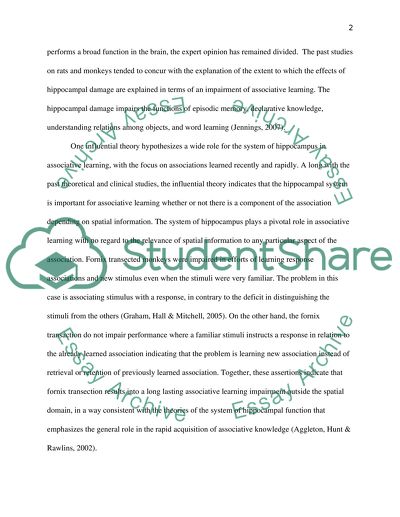Cite this document
(“To What Extend Could the Effects of Hippocampal Damage be Explained in Dissertation”, n.d.)
To What Extend Could the Effects of Hippocampal Damage be Explained in Dissertation. Retrieved from https://studentshare.org/psychology/1476825-to-what-extend-could-the-effects-of-hippocampal-damage-be-explained-in-terms-of-an-impairment-of-associative-learning
To What Extend Could the Effects of Hippocampal Damage be Explained in Dissertation. Retrieved from https://studentshare.org/psychology/1476825-to-what-extend-could-the-effects-of-hippocampal-damage-be-explained-in-terms-of-an-impairment-of-associative-learning
(To What Extend Could the Effects of Hippocampal Damage Be Explained in Dissertation)
To What Extend Could the Effects of Hippocampal Damage Be Explained in Dissertation. https://studentshare.org/psychology/1476825-to-what-extend-could-the-effects-of-hippocampal-damage-be-explained-in-terms-of-an-impairment-of-associative-learning.
To What Extend Could the Effects of Hippocampal Damage Be Explained in Dissertation. https://studentshare.org/psychology/1476825-to-what-extend-could-the-effects-of-hippocampal-damage-be-explained-in-terms-of-an-impairment-of-associative-learning.
“To What Extend Could the Effects of Hippocampal Damage Be Explained in Dissertation”, n.d. https://studentshare.org/psychology/1476825-to-what-extend-could-the-effects-of-hippocampal-damage-be-explained-in-terms-of-an-impairment-of-associative-learning.


